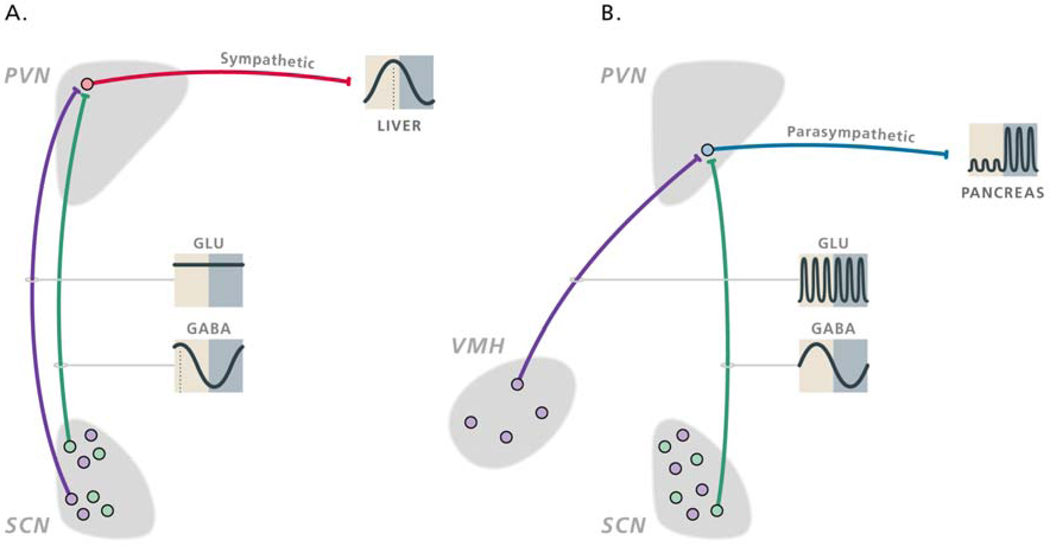Fig.7. Schematic presentation of the daily activity pattern of hypothalamic populations of GABAergic and glutamatergic neurons implicated in the autonomic control of the daily rhythms in hepatic glucose production (A) and feeding-induced insulin release (B).
The sympathetic and parasympathetic pre-autonomic neurons are inhibited by a rhythmic GABAergic input (green dots and lines) from the SCN that is mainly active during the light period. Sympathetic pre-autonomic neurons are stimulated by glutamatergic inputs (purple dots and lines) from the SCN (A), whereas parasympathetic pre-autonomic neurons are stimulated by glutamatergic inputs from the VMH (B). The glutamatergic stimulation only translates in activity of the pre-autonomic neurons when the inhibitory input from the SCN is absent. The control of the sympathetic pre-autonomic neurons that are involved in the control of the daily melatonin rhythm looks very much similar to that of hepatic glucose production, the only difference being a slight phase delay of the activity of GABAergic SCN neurons that innervate the “pineal-dedicated” pre-autonomic neurons. With permission from (Kalsbeek et al., 2008).

